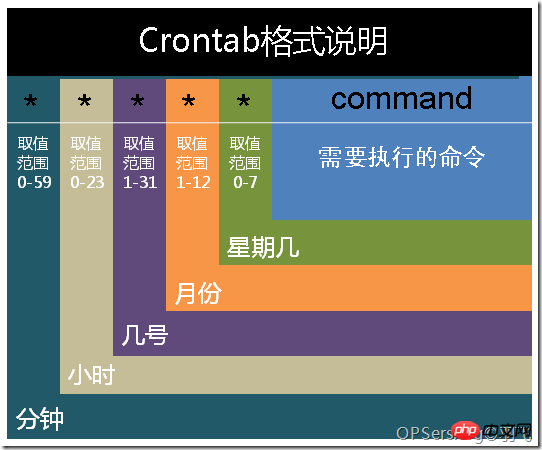1.任务节点
typedef void (*cb_fun)(void *); //任务结构体 typedef struct task { void *argv; //任务函数的参数(任务执行结束前,要保证参数地址有效) cb_fun handler; //任务函数(返回值必须为0 非0值用作增加线程,和销毁线程池) struct task *next; //任务链指针 }zoey_task_t;
handler为函数指针,是实际的任务函数,argv为该函数的参数,next指向下一个任务。
2.任务队列
typedef struct task_queue { zoey_task_t *head; //队列头 zoey_task_t **tail; //队列尾 unsigned int maxtasknum; //最大任务限制 unsigned int curtasknum; //当前任务数 }zoey_task_queue_t;
head为任务队列头指针,tail为任务队列尾指针,maxtasknum为队列最大任务数限制,curtasknum为队列当前任务数。
3.线程池
typedef struct threadpool { pthread_mutex_t mutex; //互斥锁 pthread_cond_t cond; //条件锁 zoey_task_queue_t tasks;//任务队列 unsigned int threadnum; //线程数 unsigned int thread_stack_size; //线程堆栈大小 }zoey_threadpool_t;
mutex为互斥锁 cond为条件锁。mutex和cond共同保证线程池任务的互斥领取或者添加。
tasks指向任务队列。
threadnum为线程池的线程数
thread_stack_size为线程堆栈大小
4.启动配置
//配置参数 typedef struct threadpool_conf { unsigned int threadnum; //线程数 unsigned int thread_stack_size;//线程堆栈大小 unsigned int maxtasknum;//最大任务限制 }zoey_threadpool_conf_t;
启动配置结构体是初始化线程池时的一些参数。
5.初始化线程池
首先检查参数是否合法,然后初始化mutex,cond,key(pthread_key_t)。key用来读写线程全局变量,此全局变量控制线程是否退出。
最后创建线程。
zoey_threadpool_t* zoey_threadpool_init(zoey_threadpool_conf_t *conf) { zoey_threadpool_t *pool = null; int error_flag_mutex = 0; int error_flag_cond = 0; pthread_attr_t attr; do{ if (z_conf_check(conf) == -1){ //检查参数是否合法 break; } pool = (zoey_threadpool_t *)malloc(sizeof(zoey_threadpool_t));//申请线程池句柄 if (pool == null){ break; } //初始化线程池基本参数 pool->threadnum = conf->threadnum; pool->thread_stack_size = conf->thread_stack_size; pool->tasks.maxtasknum = conf->maxtasknum; pool->tasks.curtasknum = 0; z_task_queue_init(&pool->tasks); if (z_thread_key_create() != 0){//创建一个pthread_key_t,用以访问线程全局变量。 free(pool); break; } if (z_thread_mutex_create(&pool->mutex) != 0){ //初始化互斥锁 z_thread_key_destroy(); free(pool); break; } if (z_thread_cond_create(&pool->cond) != 0){ //初始化条件锁 z_thread_key_destroy(); z_thread_mutex_destroy(&pool->mutex); free(pool); break; } if (z_threadpool_create(pool) != 0){ //创建线程池 z_thread_key_destroy(); z_thread_mutex_destroy(&pool->mutex); z_thread_cond_destroy(&pool->cond); free(pool); break; } return pool; }while(0); return null; }
6.添加任务
首先申请一个任务节点,实例化后将节点加入任务队列,并将当前任务队列数++并通知其他进程有新任务。整个过程加锁。
int zoey_threadpool_add_task(zoey_threadpool_t *pool, cb_fun handler, void* argv) { zoey_task_t *task = null; //申请一个任务节点并赋值 task = (zoey_task_t *)malloc(sizeof(zoey_task_t)); if (task == null){ return -1; } task->handler = handler; task->argv = argv; task->next = null; if (pthread_mutex_lock(&pool->mutex) != 0){ //加锁 free(task); return -1; } do{ if (pool->tasks.curtasknum >= pool->tasks.maxtasknum){//判断工作队列中的任务数是否达到限制 break; } //将任务节点尾插到任务队列 *(pool->tasks.tail) = task; pool->tasks.tail = &task->next; pool->tasks.curtasknum++; //通知阻塞的线程 if (pthread_cond_signal(&pool->cond) != 0){ break; } //解锁 pthread_mutex_unlock(&pool->mutex); return 0; }while(0); pthread_mutex_unlock(&pool->mutex); free(task); return -1; }
7.销毁线程池
销毁线程池其实也是向任务队列添加任务,只不过添加的任务是让线程退出。z_threadpool_exit_cb函数会将lock置0后退出线程,lock为0表示此线程
已经退出,接着退出下一个线程。退出完线程释放所有资源。
void zoey_threadpool_destroy(zoey_threadpool_t *pool) { unsigned int n = 0; volatile unsigned int lock; //z_threadpool_exit_cb函数会使对应线程退出 for (; n threadnum; n++){ lock = 1; if (zoey_threadpool_add_task(pool, z_threadpool_exit_cb, &lock) != 0){ return; } while (lock){ usleep(1); } } z_thread_mutex_destroy(&pool->mutex); z_thread_cond_destroy(&pool->cond); z_thread_key_destroy(); free(pool); }
8.增加一个线程
很简单,再生成一个线程以及线程数++即可。加锁。
int zoey_thread_add(zoey_threadpool_t *pool) { int ret = 0; if (pthread_mutex_lock(&pool->mutex) != 0){ return -1; } ret = z_thread_add(pool); pthread_mutex_unlock(&pool->mutex); return ret; }
9.改变任务队列最大任务限制
当num=0时设置线程数为无限大。
void zoey_set_max_tasknum(zoey_threadpool_t *pool,unsigned int num) { if (pthread_mutex_lock(&pool->mutex) != 0){ return -1; } z_change_maxtask_num(pool, num); //改变最大任务限制 pthread_mutex_unlock(&pool->mutex); }
10.使用示例
int main() { int array[10000] = {0}; int i = 0; zoey_threadpool_conf_t conf = {5,0,5}; //实例化启动参数 zoey_threadpool_t *pool = zoey_threadpool_init(&conf);//初始化线程池 if (pool == null){ return 0; } for (; i
© 版权声明
文章版权归作者所有,未经允许请勿转载。
THE END
















